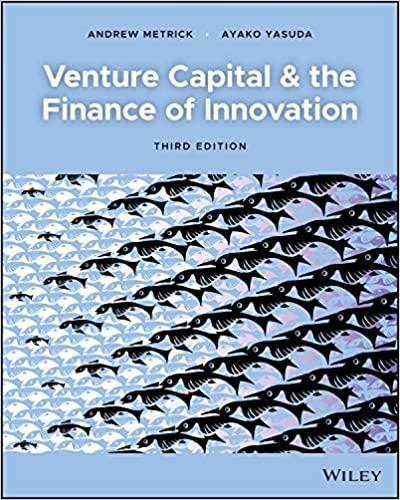Question
A manufacturer is considering alternatives regarding the production of highly specialized and useful precision part, originally engineered and developed by the company, and supplied to
A manufacturer is considering alternatives regarding the production of highly specialized and useful precision part, originally engineered and developed by the company, and supplied to the companys main customer. The company has patented the design and the use of that particular component, so no-one else can produce it without the companys permission, and, therefore, it is one of the most profitable products that the firm sells, providing $5M in annual revenues for the firm. Recently, however, the firm made certain improvements to the alloy used in the production of the part, something the engineers considered necessary to ensure the part meets new safety standards. Without certain modifications, the existing equipment used in the production of the part in question would not be able to handle the new alloy. In choosing how to address the problem, the company has three alternatives. All alternatives will be able to use the new alloy, will result in the same quality of finished produce, satisfying the companys and its customers demands, but differ in annual maintenance costs, initial price, and longevity.
The first alternative is to keep existing equipment, but update it to handle the new alloy. The old equipment was bought three years ago, at the price of US$2.3M and is being depreciated on the straight-line basis over 8-year useful life to its expected salvage value of zero. In fact, the old equipment is already worthless on the market, because moving it somewhere else costs as much as other firms are willing to pay for it. The necessary updates, which need to be depreciated over 3 years, will not prolong the life of the equipment, but will allow to increase the quality of finished product to the necessary level. The expected cost of the necessary updates is $500K. The old equipment requires $300,000 in annual maintenance expense.
The second alternative is to replace the old equipment with new one. The new equipment would cost US$1.7M to buy and install, requires $500,000 in annual maintenance expense, but has a useful life of 5 years. It is also depreciated using straight-line method but has a salvage value of $200,000 at the end of its life.
The third alternative is to outsource the production of the part to an external contractor. The management expected that external contractors would charge $800K per year to produce the required quantity of the product, at the required quality, using the newly-developed alloy. What alternative would be the least costly for the company and what alternative should the company choose? The companys weighted average cost of capital is 10% and its marginal rate of income tax is 21%. The third alternative is to outsource the production of the part to an external contractor. The management expected that external contractors would charge $800K per year to produce the required quantity of the product, at the required quality, using the newly-developed alloy. What alternative would be the least costly for the company and what alternative should the company choose? The companys weighted average cost of capital is 10% and its marginal rate of income tax is 21%
(Please show answer in Excel)
Step by Step Solution
There are 3 Steps involved in it
Step: 1

Get Instant Access to Expert-Tailored Solutions
See step-by-step solutions with expert insights and AI powered tools for academic success
Step: 2

Step: 3

Ace Your Homework with AI
Get the answers you need in no time with our AI-driven, step-by-step assistance
Get Started


